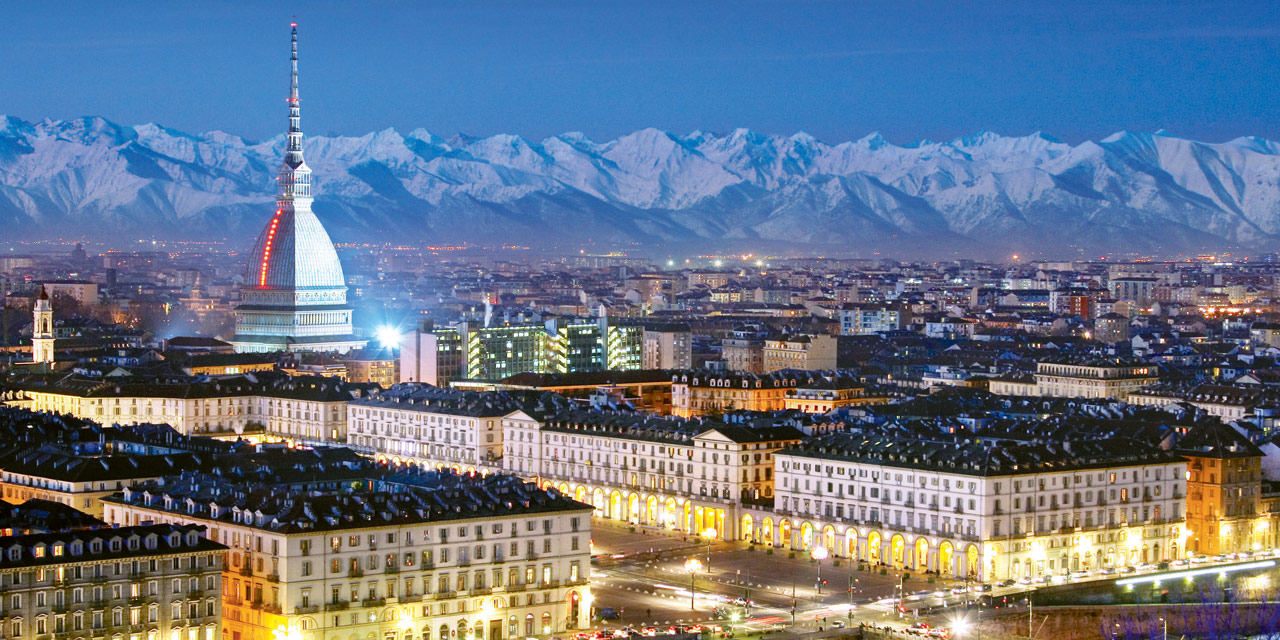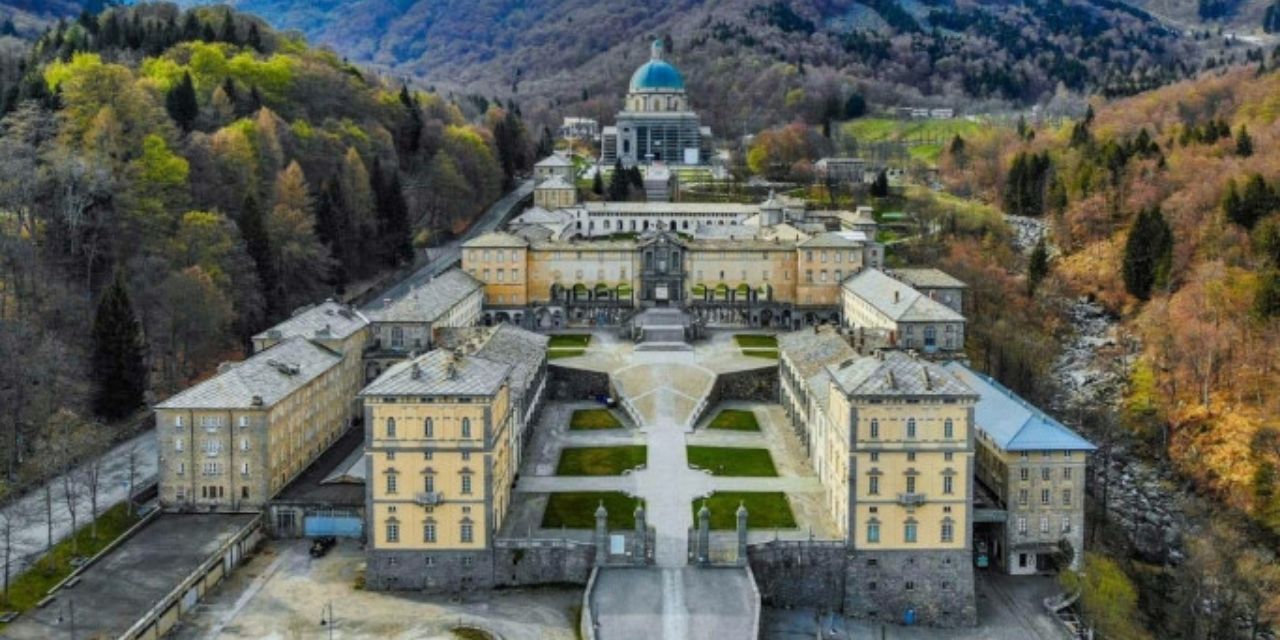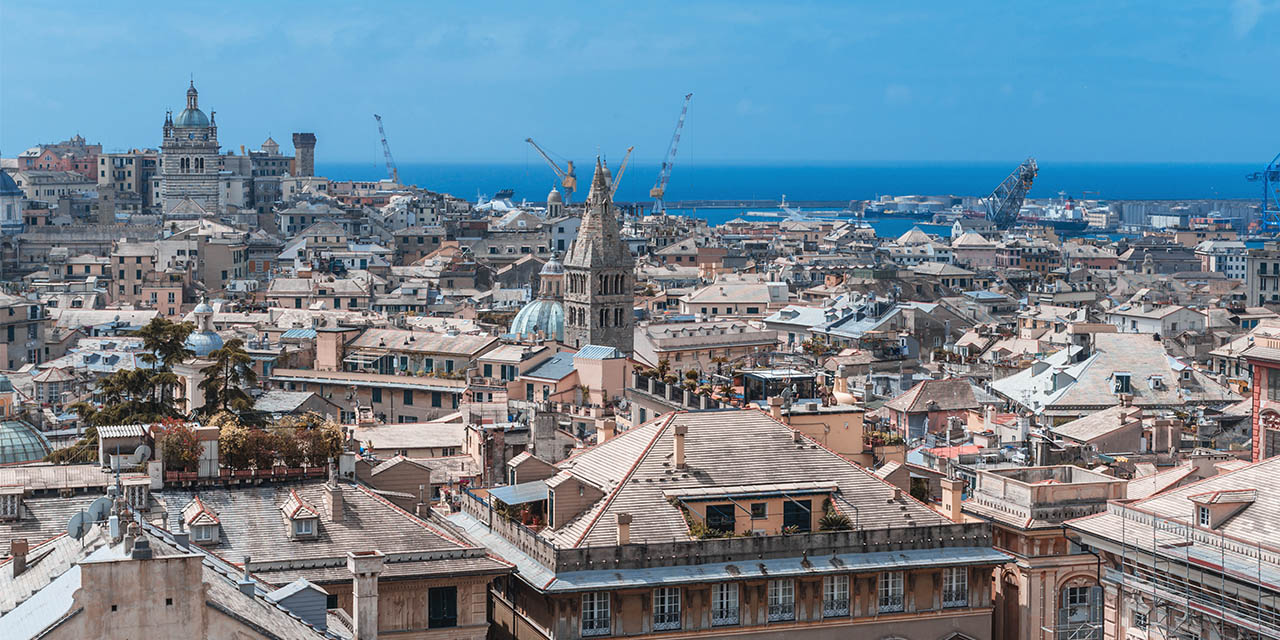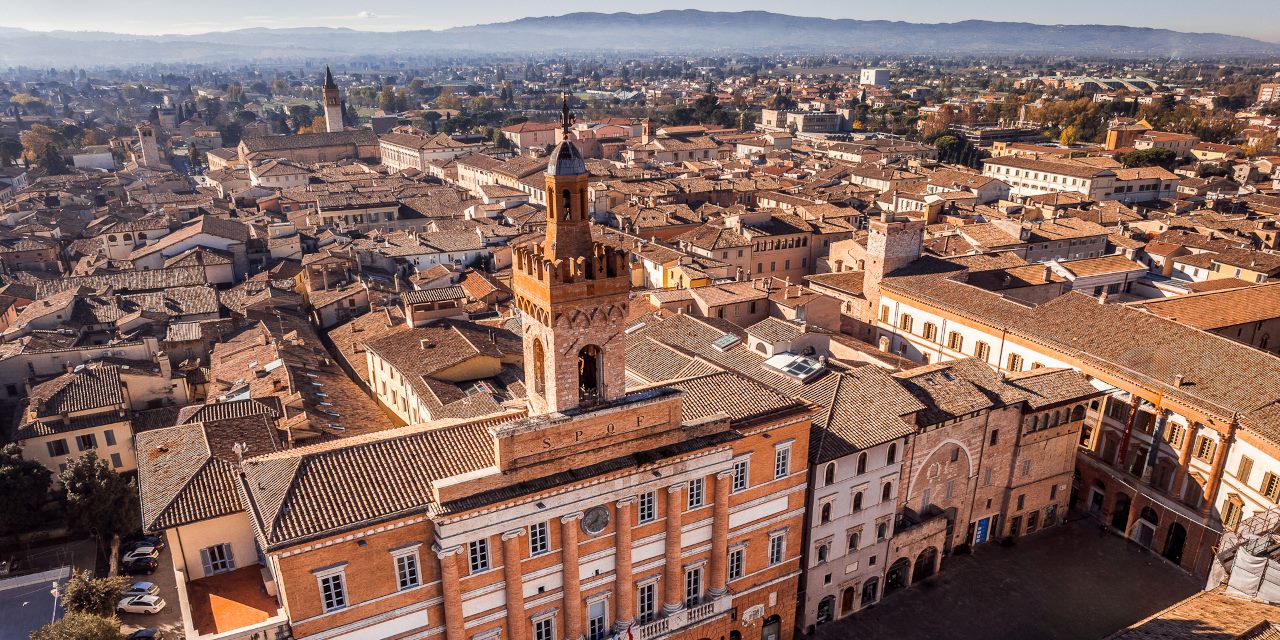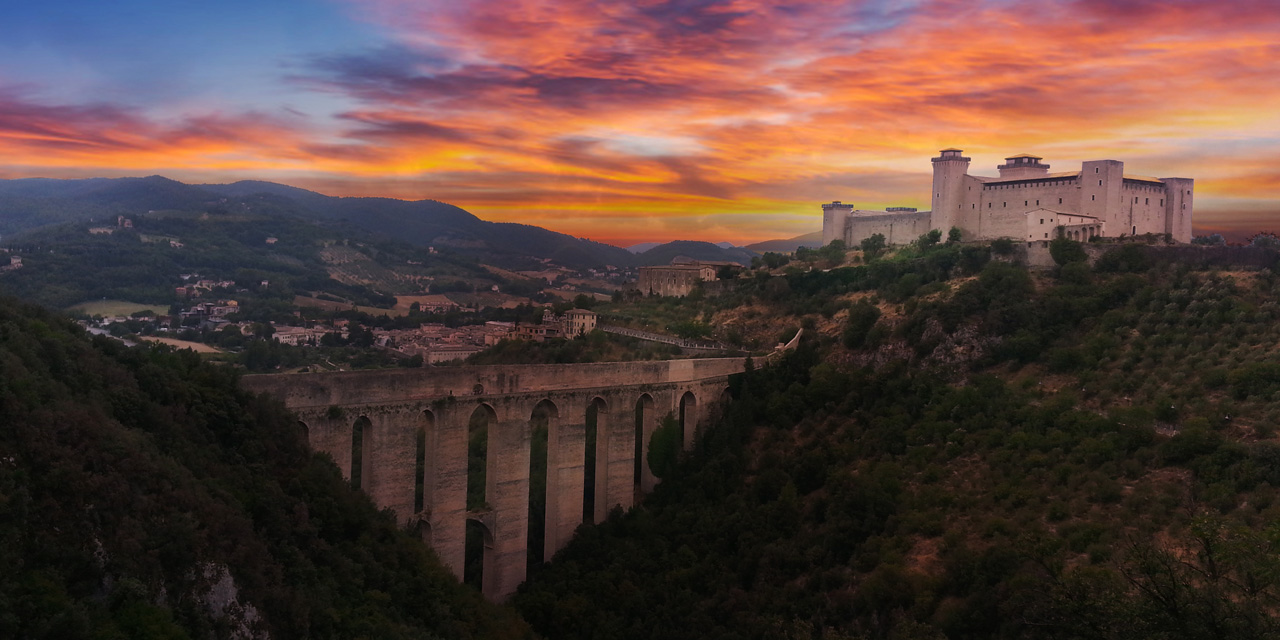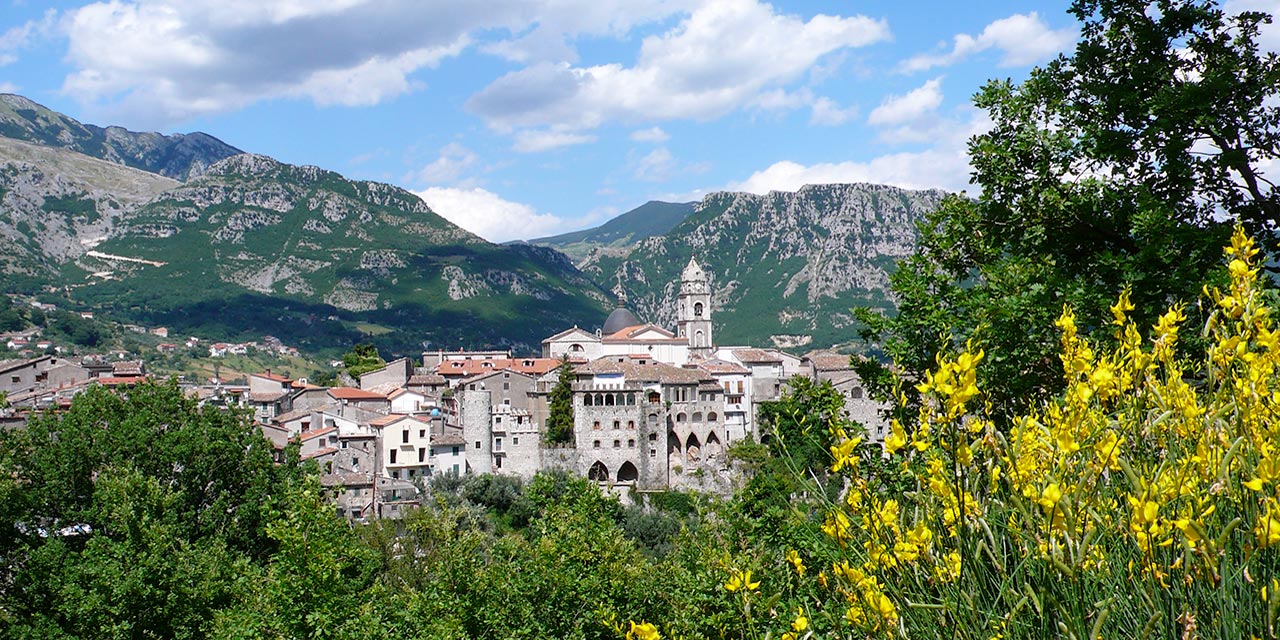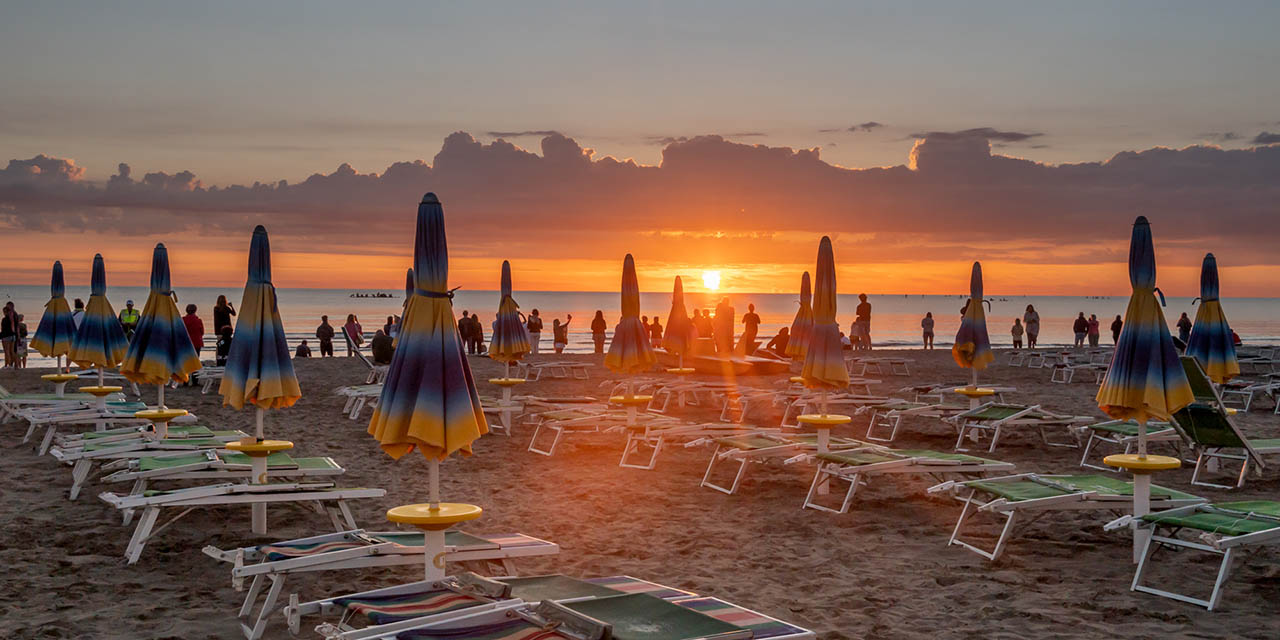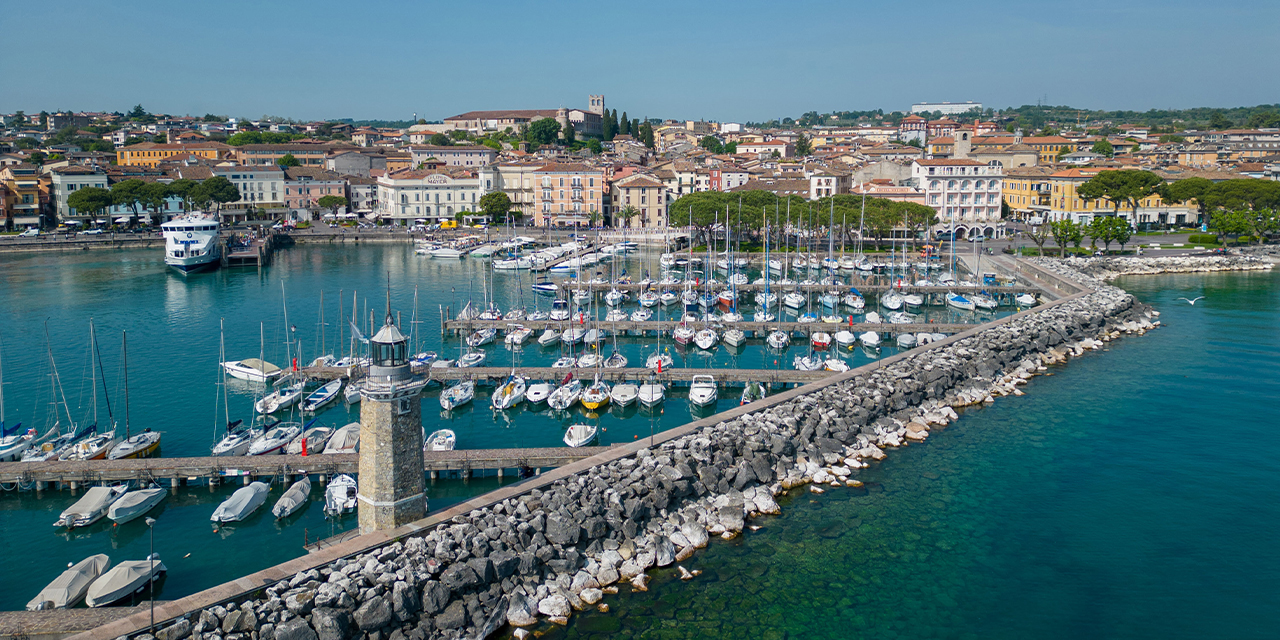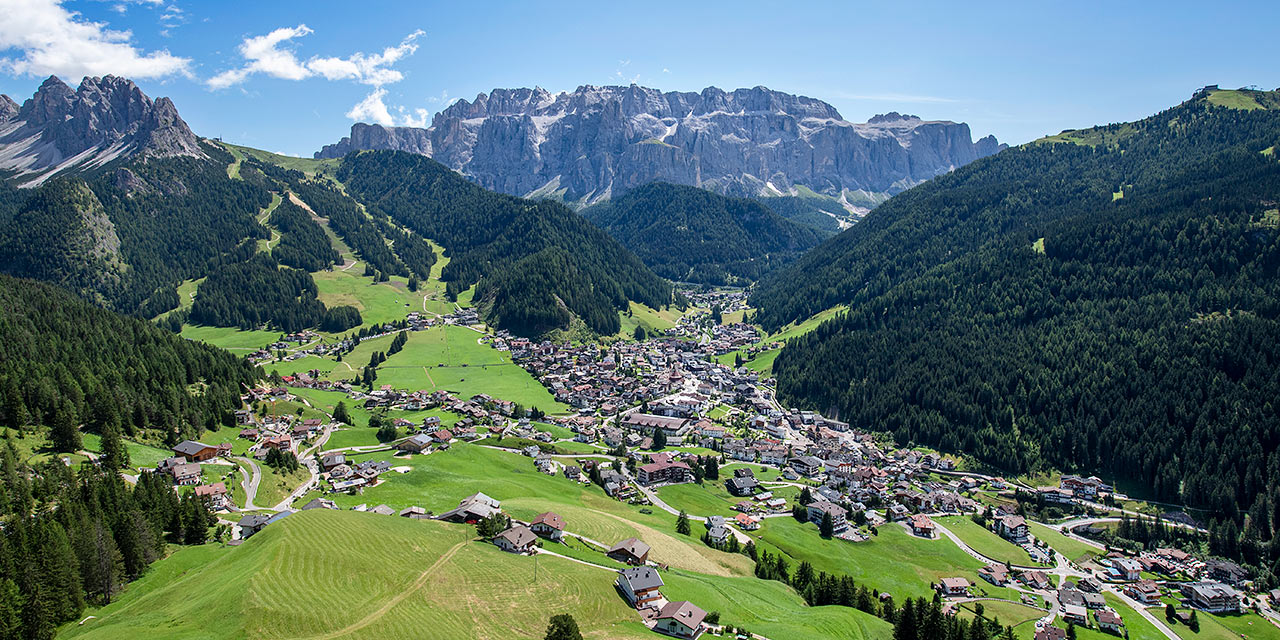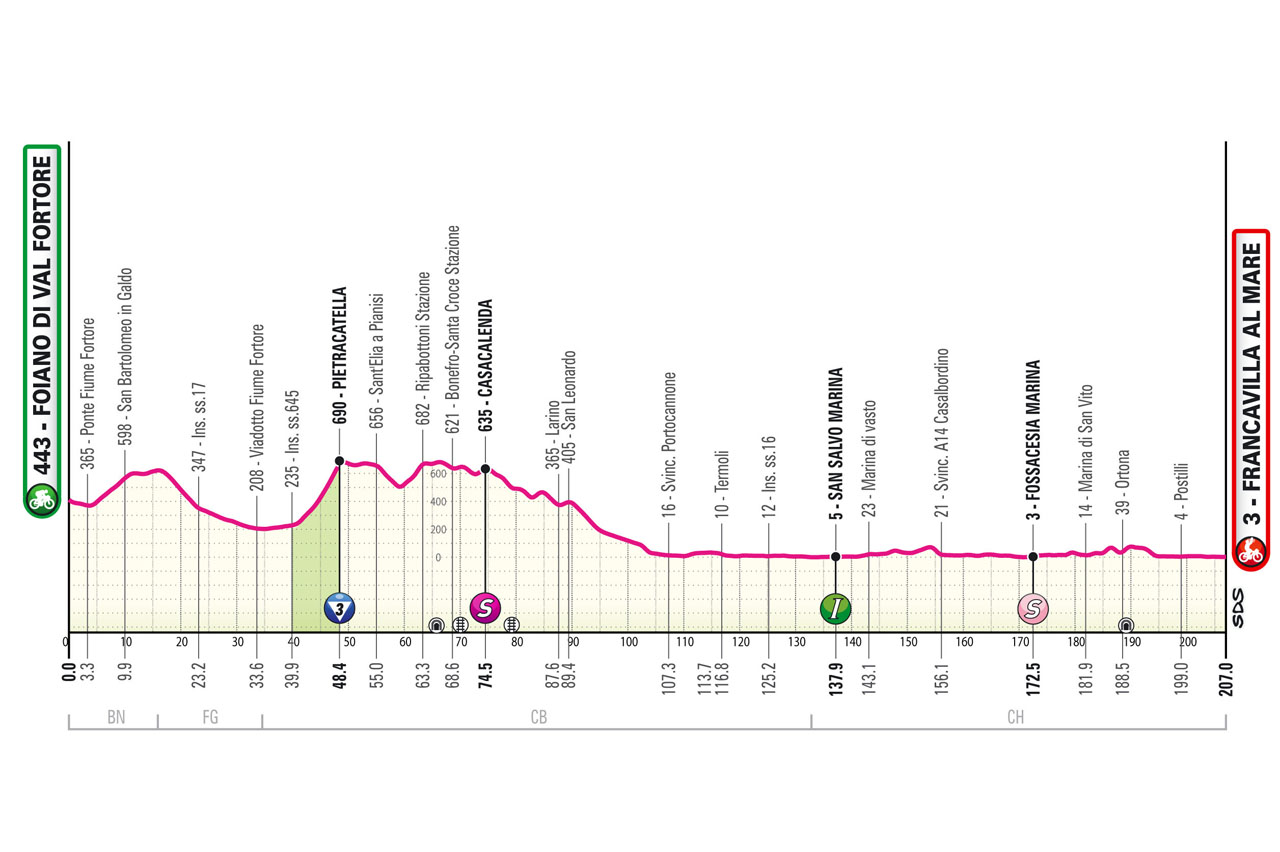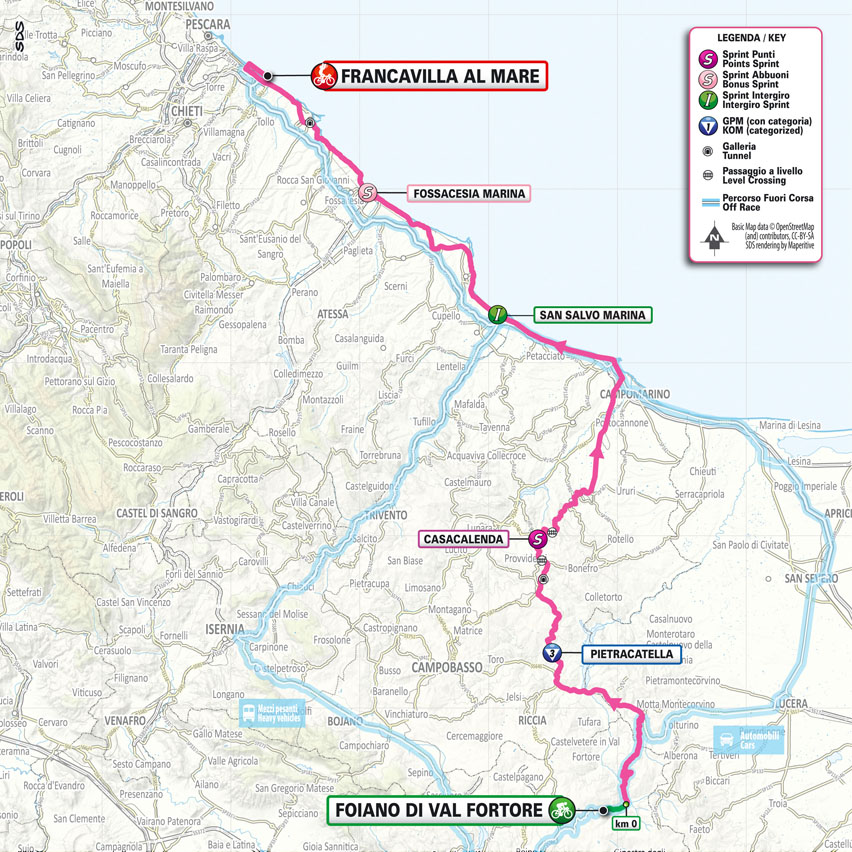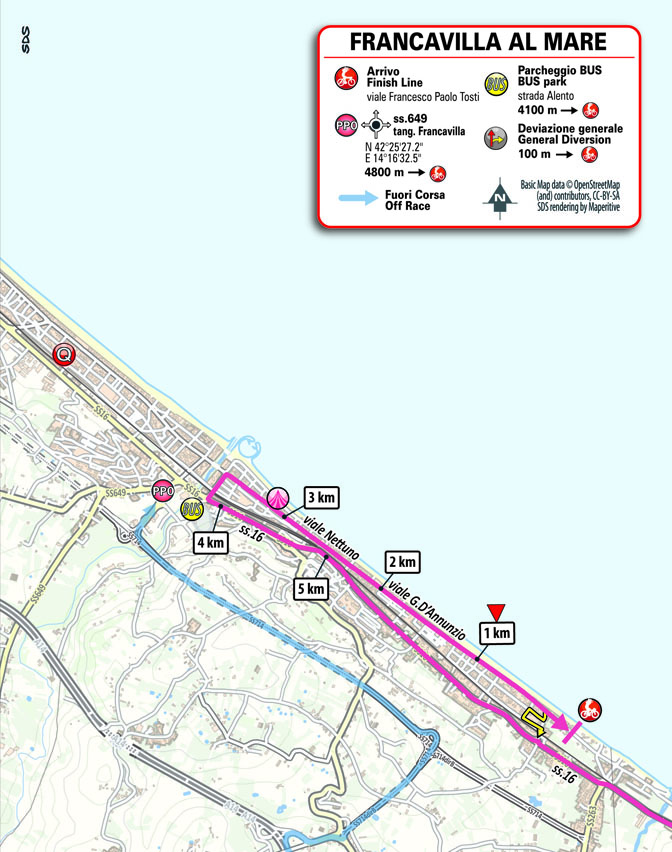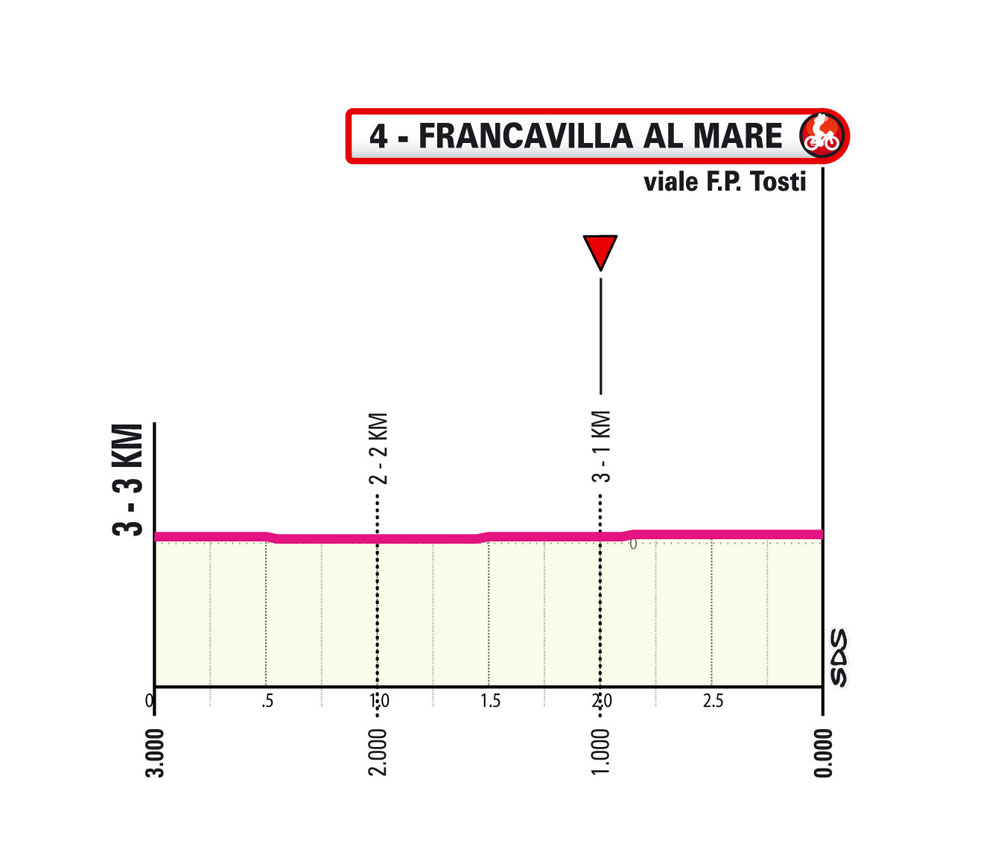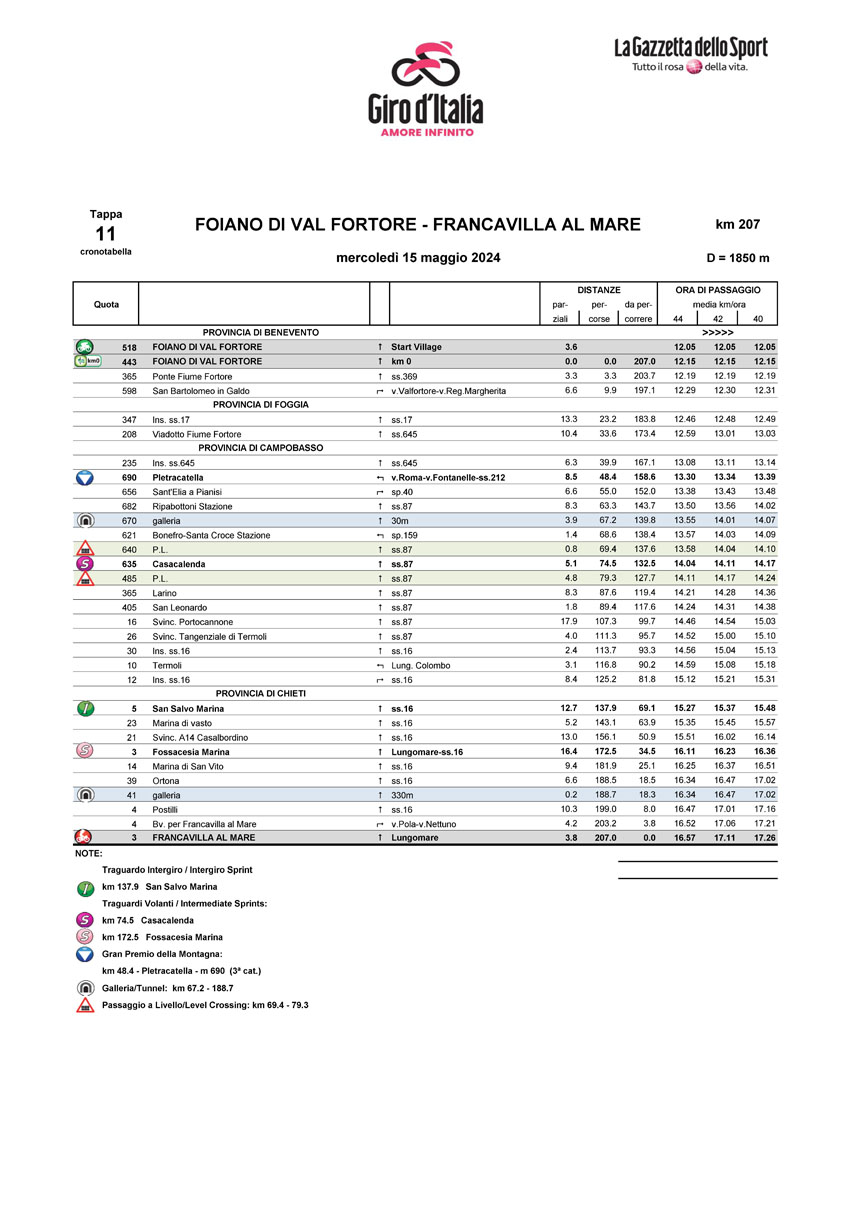profile
map
technical info
Stage clearly divided into two parts. The first crosses the Apennines to Termoli and the second, entirely flat, is played out along the ss.16 state road and the shores of the Adriatic Sea. The Apennines have some rolling roads with numerous bends. Once on the coast, the peloton enters the Adriatica state road in Termoli, which the riders will follow as far as Francavilla al Mare. The last 4 km only feature two right-hand bends that lead into the very long final straight.
Last kilometres
Last 3.5 km almost completely straight through the town, perfectly flat. The final straight is 3,000 m on asphalt, width 8 m.
start / finish
final kilometres
itinerary timetable
tourist info
Host city:
Foiano di Val Fortore
Overview
Foiano di Val Fortore has been part of the Province of Benevento since 1861, after having belonged to the Province of Foggia (until 1811) and then to Molise.
The town of Foiano is 43 kilometres away from the city of Benevento and is located 520 metres above sea level. As can be easily guessed, the entire area is named after the Fortore river, the natural border between the regions of Campania, Molise and Puglia.
Local Cusine
The landscape conformation on which the village lies favours a highly appreciated wine production as well as that of the famous caciocavallo silano D.O.P. cheese.
Caciocavallo Silano D.O.P. is a semi-hard, pasta filata (pulled-curd) cheese made from the milk of cows of different breeds, including the podolica, a typical breed indigenous to the inland areas of Campania. The most widely accepted theory on the origin of the name “caciocavallo” is that it derives from the custom of hanging the cheeses, in pairs, on wooden poles, placed near fireplaces.
Punti di Interesse
- Church of San Giovanni in Mazzocca: the Church of San Giovanni was built in the early 18th century on part of the ruins of the ancient and powerful Benedictine Monastery of Santa Maria de Gualdo. Today, the building, after a massive restoration, shows modern architecture. The Church, erected on the site where the patron saint of Fioiano died and was sanctified, constitutes an important point of reference for people of faith.
- Church of Our Lady of the Rosary: this is the main place of worship in the centre of Foiano di Val Fortore and a series of interesting artistic works can be visited in its three naves (altars, statues, sacred furnishings, paintings).
- The Historical Centre: among the old residential units, one can still admire simple 19th and 20th century stone portals. Visitors also come across the tall bell tower with its imposing stone and brick structure. This bell tower dates back to around 1700.
Madonna della Libera Church: its construction dates back to 1462 and remains the oldest building in the village. Its name derives from the gratitude to the Virgin Mary of those who built it for surviving the earthquake of 1456. Today, the church with the small square of St. Mary in front of it, accurately restored in local stone, fits into a picturesque overall image that characterises the village.
Francavilla al Mare
Overview
Francavilla al Mare is a tourist resort located along the beautiful Adriatic coast of Abruzzo. Boasting a rich and fascinating history, this coastal town offers visitors a journey through time, immersed in an atmosphere that combines historical charm with natural beauty.
Francavilla al Mare is “Blue Flag 2023” and, with its long, golden sandy beach stretching along the Adriatic coast, this town is not short of breathtaking scenery. The crystal clear sea offers opportunities for relaxation and fun, while the surrounding hills are perfect for scenic excursions.
Francavilla al Mare is the ideal destination for those seeking a combination of history, culture, nature and culinary delights. With its timeless charm and the warm welcome of its inhabitants, this coastal town enchants visitors from all over the world.
Local Cusine
Local Cusine lovers will have the opportunity to savour the delicious local dishes, which are renowned for some of the typical products they are cooked with, such as Abruzzo pear tomatoes and strawberries. Furthermore, visitors will have the opportunity to taste the region’s fine wines, steeped in a wine tradition rooted in Abruzzo’s fertile soil.
Points of Interest
Visitors to Francavilla al Mare will be fascinated by its thousand-year history. Several historical buildings are located throughout the municipal area. Among the most significant ones:
- The Church of Santa Maria Maggiore (San Franco): this church was originally erected in the 15th century but completely rebuilt in 1948 after being destroyed during World War II. Designed by Ludovico Quaroni, it is built on a wide stone base on which rises the single nave in the shape of an irregular octagon, with a flattened vaulted dome.
- The Michetti Convent: the convent of the Friars Minor Observant, dedicated to Saint Anthony of Padua is one of the symbols of the city.











